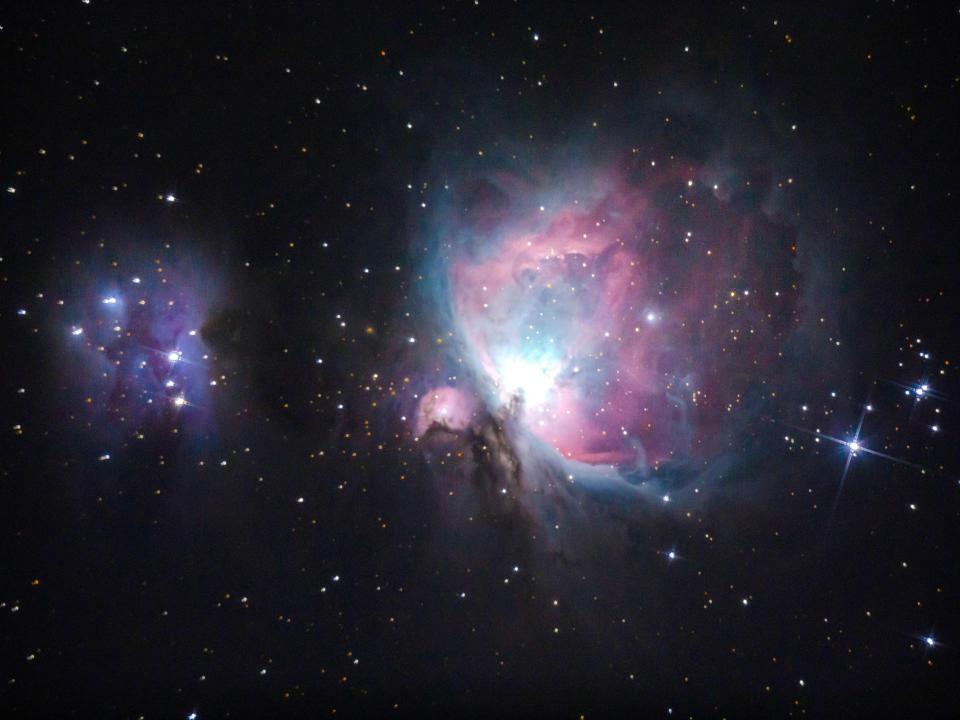‘World’s fastest AI’ comes online, tasked with creating 3D map of the universe

It is hoped the Perlmutter system will enable us to better understand dark energy and the expansion of the universe
(Ye Aung Thu/AFP/Getty)One of the most powerful supercomputers in the world has been brought online in the US and will be asked to apply its considerable artificial intelligence to some of the most challenging projects out there, from astrophysics and climate, to clean energy technologies.
The Perlmutter system, a Hewlett-Packard-built Cray EX supercomputer, was unveiled at the National Energy Research Scientific Computing Center (NERSC) in California, part of the Lawrence Berkeley National Laboratory, and is “the fastest on the planet”, according to Nvidia, the chip manufacturer supplying much of its graphics hardware.
“The Perlmutter supercomputer will help inspire the next generation of scientists and innovators, allowing the US and Department of Energy to remain a leader in using scientific computation to answer our greatest questions,” said David Turk, the US Department of Energy’s deputy secretary, at its launch.
“As we continue to enhance and deploy computing platforms like this, our national labs will only be better positioned to develop solutions to today’s toughest problems, from climate change to cyber security.”
The machine is powered by 6,159 Nvidia A100 Tensor Core graphics processing units, rendering it capable of delivering almost four exaflops or a quintillion floating-point operations per second, according to Nvidia.
The system, named after Nobel Prize-winning astrophysicist Saul Perlmutter, will immediately be put to work on no less a task than creating a 3D map of the universe, according to SiliconANGLE.
That will involve the Perlmutter in processing data from the same laboratory’s Dark Energy Spectroscopic Instrument, which can capture images from up to 5,000 galaxies in a single exposure, a job that, it is hoped, will enable us to better understand dark energy and the accelerating expansion of the universe.
Another project will see it probing subatomic interactions in green energy sources in the hope of developing superior battery storage technology and, potentially, new biofuels.
WATCH: Why is @argonne's Katrin Heitmann excited for @NERSC’s #Perlmutter supercomputer? She'll be using it to better understand the evolution + makeup of the universe and to probe the nature of #DarkEnergy.
About #PerlmutterHPC: https://t.co/F5dmI9uuPN@VRubinObs @BerkeleyLab pic.twitter.com/CCMTrqVg2I— NERSC (@NERSC) May 28, 2021
“Traditional supercomputers can barely handle the math required to generate simulations of a few atoms over a few nanoseconds with programmes such as Quantum Espresso,” said Nvidia senior product marketing manager Dion Harris.
“But by combining their highly accurate simulations with machine learning, scientists can study more atoms over longer stretches of time.
“Perlmutter’s A100 Tensor Cores are uniquely suited to help with this, as they’re able to accelerate both the double-precision floating point math for simulations, and the mixed-precision calculations required for deep learning.”
On the immense potential of his namesake, Dr Perlmutter himself said: “This is a very exciting time to be combining the power of supercomputer facilities with science, and that is partly because science has developed the ability to collect very large amounts of data and bring them all to bear at one time.
“This new supercomputer is exactly what we need to handle these datasets. As a result, we are expecting to find new discoveries in cosmology, microbiology, genetics, climate change, material sciences, and pretty much any other field you can think of.”
Read More
Elon Musk reveals Starship progress ahead of first orbital flight of Mars-bound craft

 Yahoo Finance
Yahoo Finance 